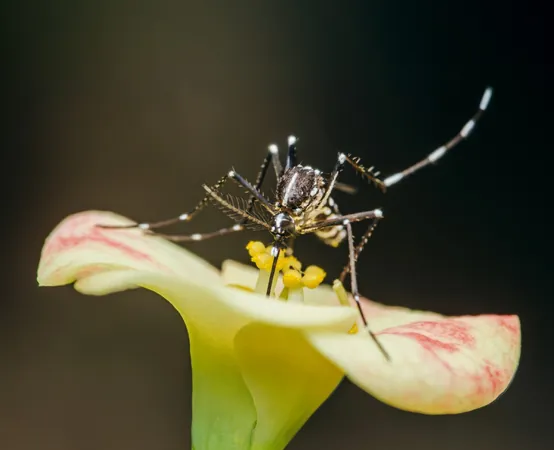
Heat Wave Unleashes Dengue Fever: A Global Health Emergency
2025-09-13
Author: Daniel
A Hidden Health Crisis on the Rise
A heat-driven health crisis is quietly emerging—not through coughs and fevers, but via swarms of buzzing mosquitoes. Dengue fever, a disease previously confined to tropical regions, is breaking geographical barriers and threatening urban areas that have never faced this menace before. The driver? Climate change is causing temperatures to soar.
The Perils of Dengue Fever
Dengue fever is far more than just an inconvenience. Its symptoms can start with debilitating high fever, severe headaches, and body aches, but can escalate to internal bleeding, organ failure, and even death.
Dengue's Expanding Territory
Once primarily seen in Brazil and the Philippines, dengue is now poised to impact millions more across Asia and the Americas, reshaping the landscape of this life-threatening disease.
Temperature as a Catalyst for Transmission
Recent research has amplified our understanding of how heat influences dengue's spread. Analyzed data from 1.4 million dengue cases across 21 countries highlighted the startling reality: even minor temperature increases are exacerbating dengue outbreaks.
Marissa Childs, the lead researcher from the University of Washington, noted, "The effects of temperature were much larger than I expected. Small shifts can vastly affect dengue transmission, showcasing the fingerprints of climate change already at work."
The Mosquito's Ideal Climate
Dengue doesn’t thrive in all heat—it flourishes within a narrow temperature range, reaching peak danger around 82°F. This optimal condition allows the mosquitoes, which carry the virus, to thrive and multiply, putting once-cool cities in Mexico, Peru, and Brazil at increasing risk.
While hotter areas may experience minor reductions in dengue spread, the massive increases elsewhere overshadow these declines, leading to an overall surge in infections.
A Climate Crisis Feeding Dengue
Between 1995 and 2014, warmer temperatures accounted for 18% of dengue infections in the studied countries. Alarmingly, climate-forced warming has generated over 4.6 million additional dengue cases each year. If greenhouse gas emissions continue to climb, we could see dengue cases soar by 49% to 76% by 2050.
Uncovering New Risks
The research likely underrepresents the true scale of the problem, omitting regions with unreliable data, such as India and Africa, and areas where dengue is resurfacing, including parts of the United States and Europe. Cases have already been reported in California, Florida, Texas, Hawaii, and even southern Europe.
Strategies for Combatting Dengue Spread
To address this looming crisis, experts propose two key approaches: prevention and preparation. Emphasizing aggressive strategies to reduce carbon emissions can counteract rising temperatures and curb the disease's spread.
However, even with dedicated effort, adapting to this new reality is essential. Health systems need fortification, expanded mosquito control initiatives, and increased access to vaccines.
The Urgent Call for Action
Climate change's effects extend beyond mere weather fluctuations—it has severe implications for human health, particularly by facilitating disease transmission through mosquitoes. As federal efforts to combat climate change wane, preparation becomes critical for addressing the public health ramifications driven by fossil fuel emissions.
This study amplifies the alarming truth: dengue is not just spreading; it serves as a glaring indicator that climate change is already inflicting human suffering. If swift action is not taken, the future looks increasingly grim.



 Brasil (PT)
Brasil (PT)
 Canada (EN)
Canada (EN)
 Chile (ES)
Chile (ES)
 Česko (CS)
Česko (CS)
 대한민국 (KO)
대한민국 (KO)
 España (ES)
España (ES)
 France (FR)
France (FR)
 Hong Kong (EN)
Hong Kong (EN)
 Italia (IT)
Italia (IT)
 日本 (JA)
日本 (JA)
 Magyarország (HU)
Magyarország (HU)
 Norge (NO)
Norge (NO)
 Polska (PL)
Polska (PL)
 Schweiz (DE)
Schweiz (DE)
 Singapore (EN)
Singapore (EN)
 Sverige (SV)
Sverige (SV)
 Suomi (FI)
Suomi (FI)
 Türkiye (TR)
Türkiye (TR)
 الإمارات العربية المتحدة (AR)
الإمارات العربية المتحدة (AR)